Looking at the evolution of Augusta National's gorgeous par-5s

Augusta National’s full selection of par-5 holes feature names as pretty as the scoring they’ve conceded: Pink Dogwood, Juniper, Azalea and Firethorn.
While the par-4s represent the grip-tightening stress-fest over undulating terrain The Masters has become known for, the 5s - as they almost always are on the PGA Tour - are where the players feast.
Check out the historical stroke averages of the four:
- No. 2, Pink Dogwood: 4.82 (16)
- No. 8, Juniper: 4.795 (17)
- No. 13, Azalea: 4.838 (15)
- No. 15, Firethorn: 4.776 (18)
Simply put: fail to make birdie or better, and you’ve lost shots to the field.
Because no great course should find itself trembling at the hands of infinitely fallible human golfers, few holes at Augusta National have been tweaked more than the par-5s in hopes of upping the difficulty factor.
Of course, when a par-5 is reachable in two - as Bobby Jones preferred them to be for talented players - they can only be made so difficult.
As you walk off the first green (with your historically average 4.245 strokes, of course), you walk to the tee of your first 5.
No. 2, Pink Dogwood, 525 yards to 575
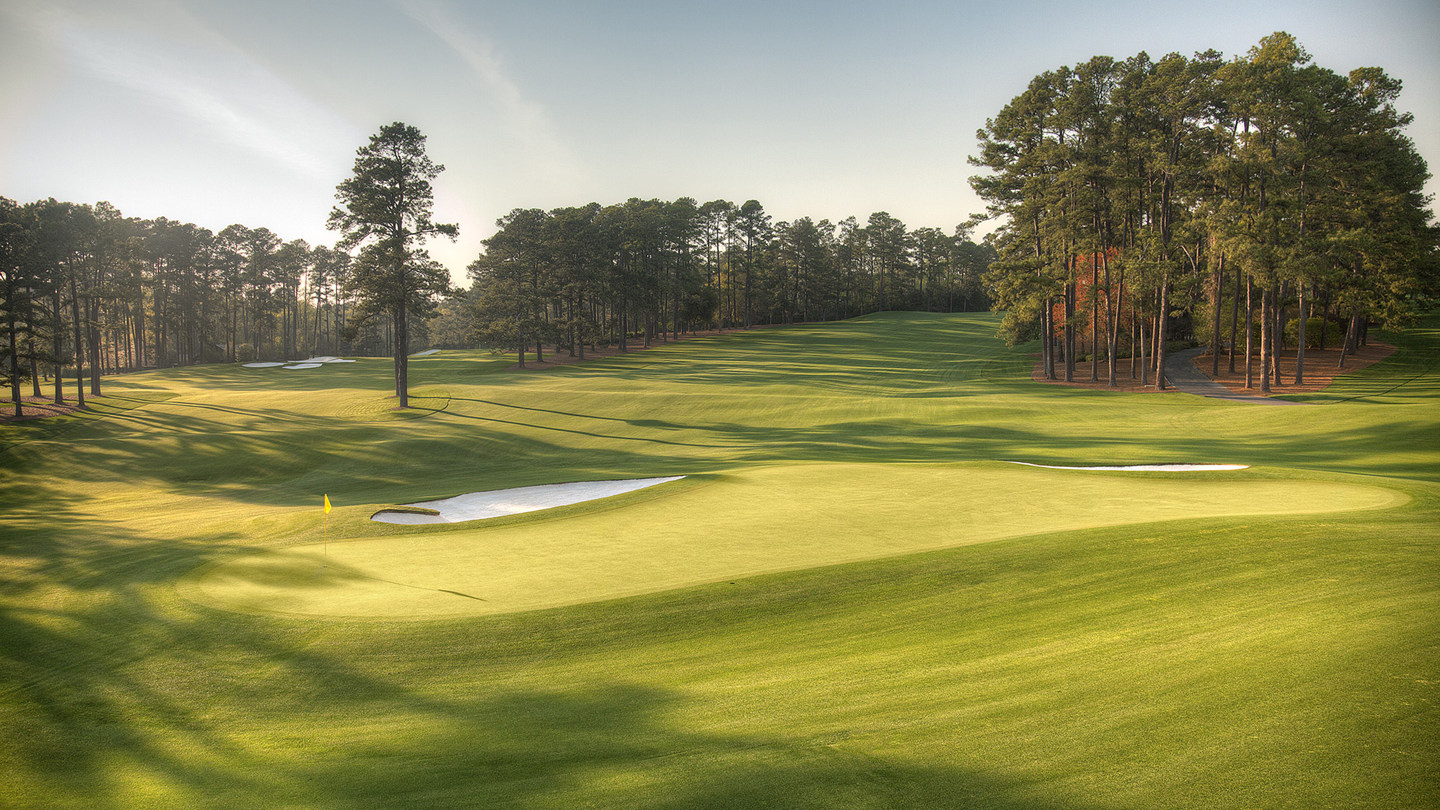
Number two is a welcome exhale for golfers after the difficult first, but that wasn’t always the case - back in 1934 the back nine was the front, so what’s now No. 2 was once No. 11. That first year, this hole was 525 yards, but with the gradual downhill slope of the hole, it was still gettable in two.
The hole sported a large bunker in the middle of the fairway, but it was so close to the tee it was rendered nearly useless. And while then, as now, you’d like to shape your tee shot right to left, a ball that didn’t listen and stayed out right hardly caused the players much trouble.
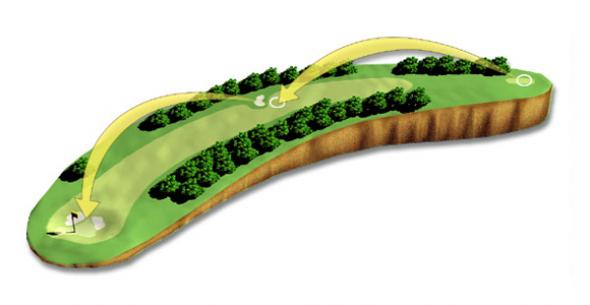
(Image courtesy: Augusta.com)
Today the hole stretches 575 yards thanks to a 1999 relocation of the teebox, and boasts a relatively dense lining of trees up the right. So, either turn the ball over, or your next shot is a forced layup through the trees. The green has also become more narrow at the front, making any long approach something far more challenging than a gimme.
No. 8, Juniper, 500 yards to 570
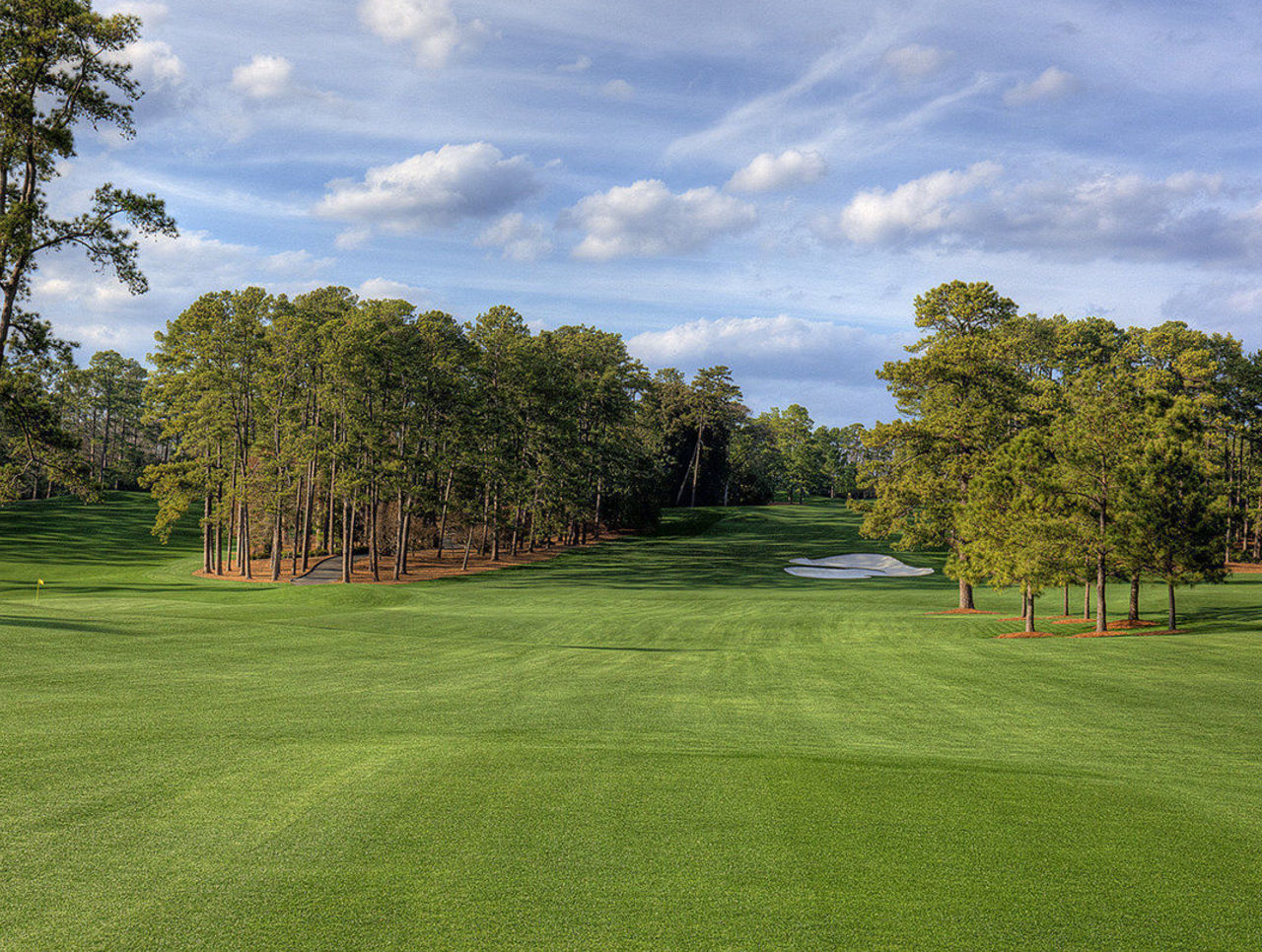
The once fairly straight, 500-yard uphill par 5 - which doesn’t sound too interesting - has actually become a beautiful, challenging hole.
It began with three curiously large mounds to the left of the green that were removed in 1957 to improve spectator viewing, but those were really unique features that did a nice job blocking the view of the golfer well below in the fairway. The mounds were rightfully restored in 1979 and remain today, as does the steep incline of the hole.

(Image courtesy: Golf Digest)
The biggest change for players has been the tees moving back and to the right on a hole where favoring the right helps. That forces you to align left, which requires a gentle cut off of the tee (for righties) … only, they’ve taken the small fairway bunker, moved it farther out and to the right and made it deeper, so it’s a precarious shot to attempt. There’s a landing strip that requires shaping the ball to get at, while the right features sand; the left, trees.
If a bomber wants to clear that bunker, well, just carry the ball 315 yards off the tee uphill, champ. That shouldn’t be such a big deal.
No. 13, Azalea, 480 yards to 510
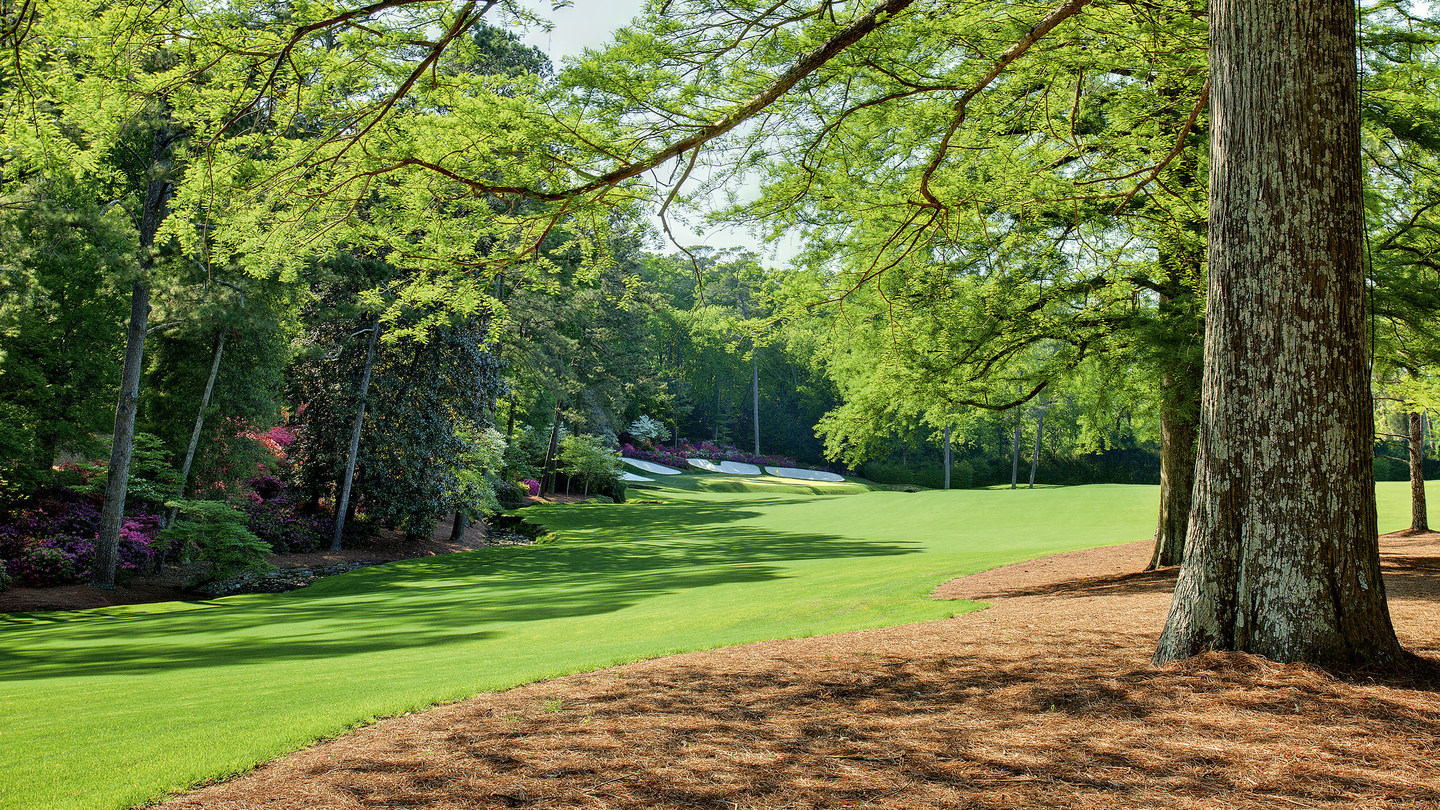
Of the four par 5s, the gorgeous 13th has probably undergone the fewest revisions, and with good cause. It’s basically unchanged from the first day the natural terrain was transformed into a golf course, save for the addition of tees and greens. If there’s any proof that Augusta National was meant to be a golf course, that’s about it right there.
Of course, at least a few tweaks have since been made to this last leg of the famed Amen Corner.
A piece of land was purchased from the Augusta Country Club to lengthen the hole - a necessary defense given the length of today’s pros - and the fairway has been pinched with trees at the landing area to force increased accuracy.
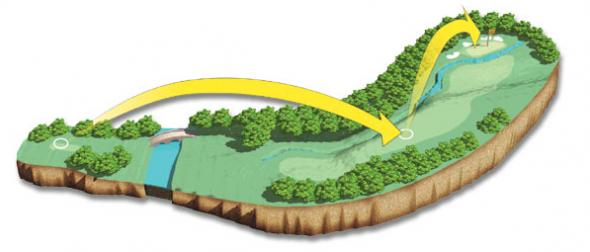
(Image courtesy: Augusta.com)
Other than that, just a few bunkers, some shrubbery and a heating/cooling system (not visible to the naked eye) have been added to the green and surrounding area. Getting off the tee well is crucial, given that possible outcomes after a long second are usually either “on the green” or “entirely boned.”
No. 15, Firethorn, 485 yards to 530
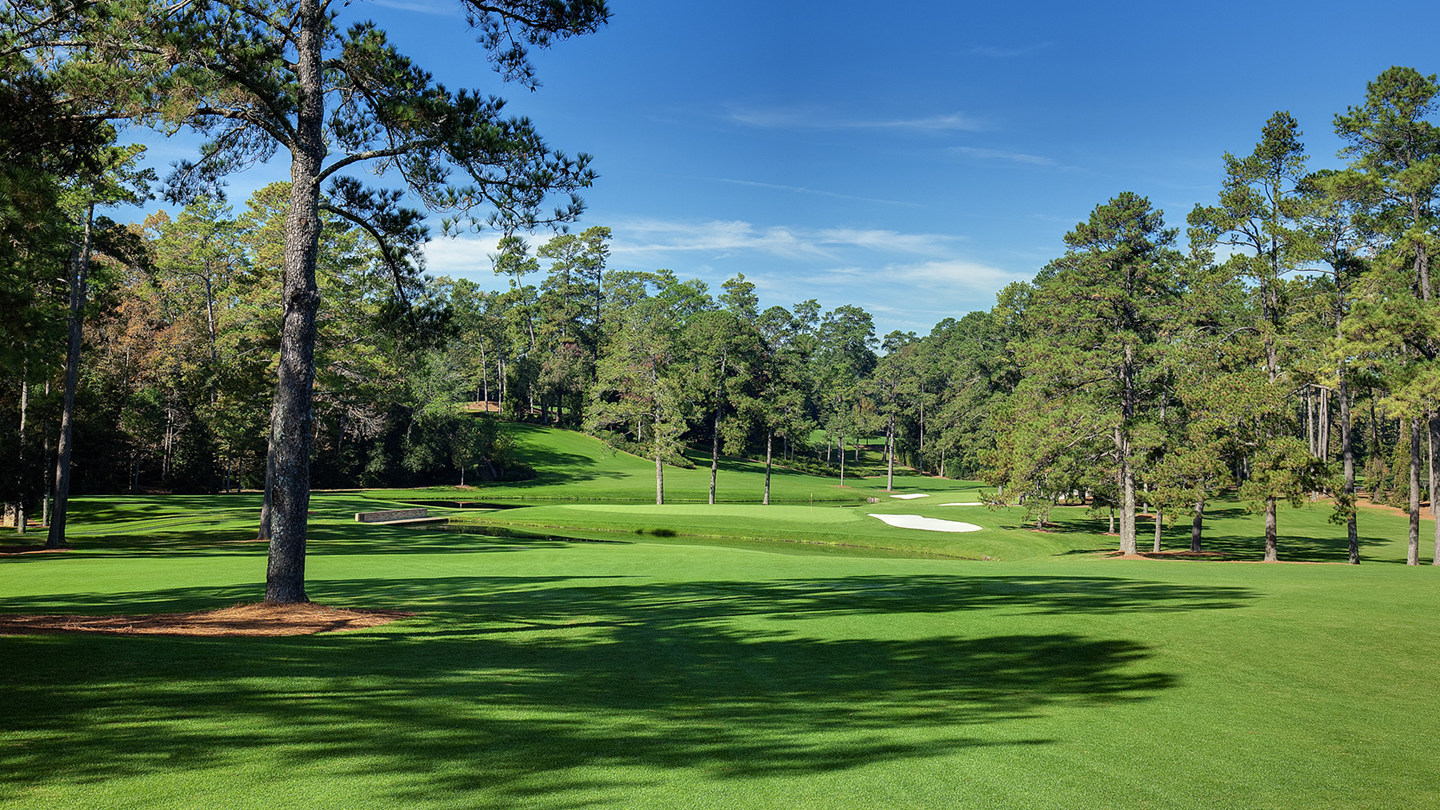
If Bobby Jones believed all par 5s should be reachable in two for the best players, there’s no finer proof than 15 (originally No. 6). This is the hole where in 1935, Gene Sarazen canned a 235-yard double eagle, achieving a rare albatross. And in those days, guys were basically swinging wooden stirring spoons and hitting balled-up chunks of marzipan.
Today, the hole is an additional 45 yards longer, making it a length that players like Dustin Johnson and J.B. Holmes could … well, could still get home in two if they were using the actual clubs Sarazen used in 1935.
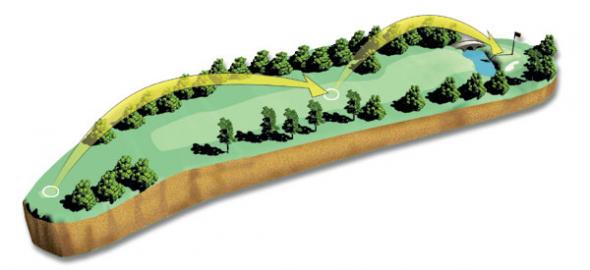
(Image courtesy: Augusta.com)
The new tee is 30 yards behind the old one and 20 yards left, which forces players to deal with the hole’s biggest addition since the course’s earliest days: trees. There’s now a fairly narrow neck that requires a gentle fade from a righty who hopes to take a crack at the green in two. What was once a stream in front is now a decently sized body of water, so the bigger the drive, the less you’ve got “splash” weighing on your mind.